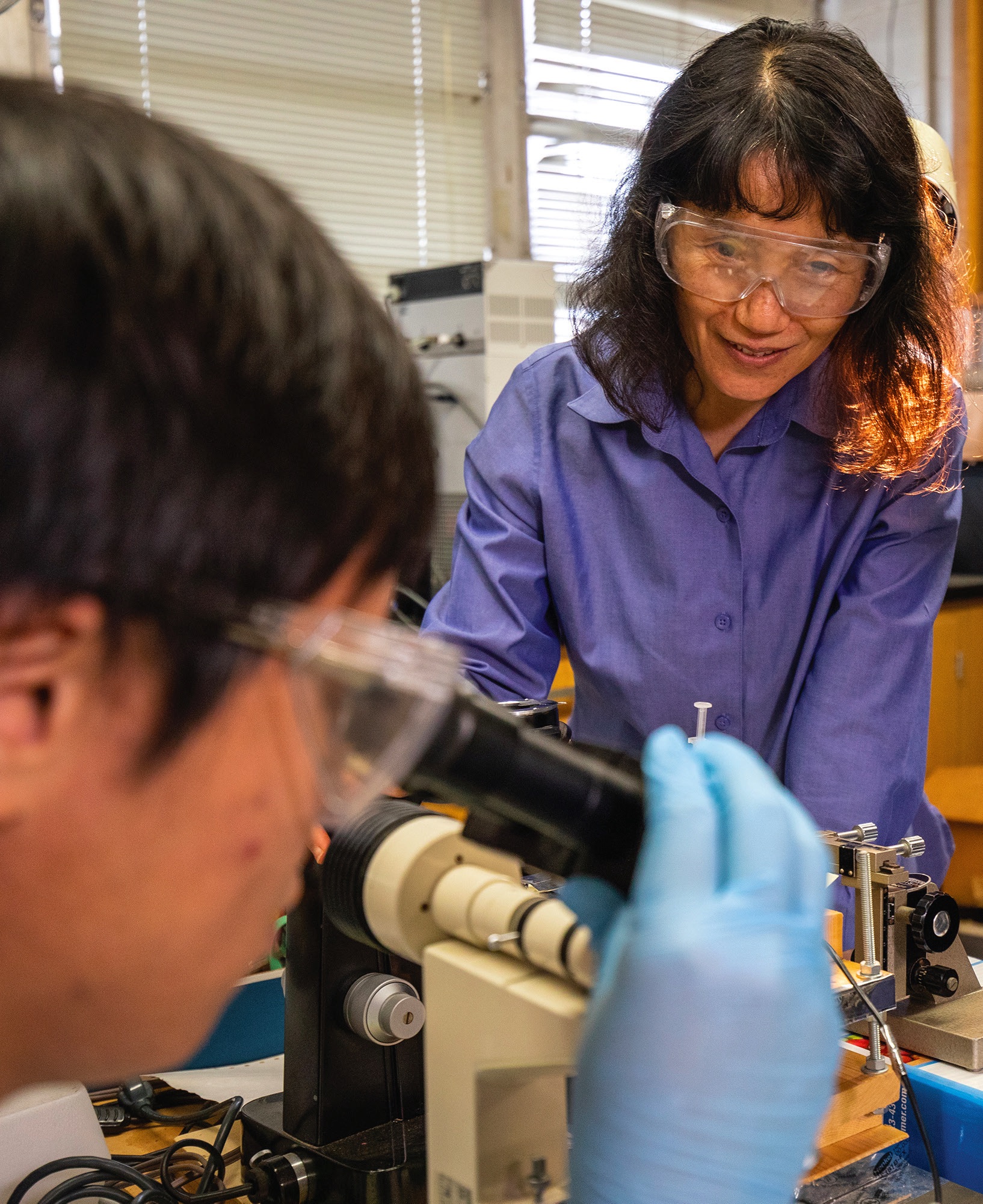TLT: How did you become interested in a research career in tribology?
Liang: I was introduced to tribology by my graduate advisor, professor Traugott Fischer. My doctoral research was related to tribological and tribochemical mechanisms of ceramics. Materials are important for applications in tribology. Ceramics have a lot of interesting aspects despite their brittleness. For example, because of its reputation of being hard and noble, people like to say a diamond is forever, which represents the material and a lifelong relationship. The material itself, however, wears out rather quickly if it is in the condition of cutting some other materials like silicon. Such phenomenon has the benefit for polishing diamond to make jewels but would be a poor choice to be used as drill bits. You see, if we put a pair of rubbing materials together in various environments, they behave quite differently. There is no universal wear law, and a service life is never a linear predictable performance. The more we study about tribology, the less I feel we have an understanding about it, and the more the field becomes interesting. Now, we are studying the roles of nanomaterials in lubrication. For the same material, because of the size difference, from nanometers to otherwise larger, they behave very differently.
TLT: Where have you worked during your career?
Liang: I have spent most of my career in academia. Before becoming a professor, I did my postdoctoral research at the National Institute of Standards and Technology and worked in the microelectronics industry.
TLT: Have your students continued work in lubrication or tribology following graduation?
Liang: Yes, several of them are continuing to work in tribology and are becoming the major task force of their organization. The field of tribology is interdisciplinary, and problems are always integrated and complex. We will never run out of questions to answer and problems to solve.
 TLT: Can you give us some examples of your work and its significance?
TLT: Can you give us some examples of your work and its significance?
Liang: One of my earlier works was on chemical-mechanical polishing (CMP), a major processing step in fabrication of integrated circuits. There were issues in yields, defects, efficiency and control. When I joined industry, we introduced tribology to the application field and used tribological approaches to deal with CMP parameters. To date, tribology continues to play important roles in CMP. We have gained so much understanding of fundamental principles underneath a polishing pad.
One of my recent works has been on nanomaterials and their applications as lubricant additives. Through our various experimental approaches, we found that nanoparticles play several important roles as additives. They can promote the formation of a tribofilm, or be used as a filler to form a film; they can be used as sensors as well as markers for condition monitoring; they add more or novel functions to existing lubricants; and more.
TLT: Where do you see the future of tribology research in the next five years?
Liang: Technologies have been changing rather rapidly, particularly in robotics, manufacturing and electric vehicles. The tribological applications become more challenging on materials and mechanical systems. I see the needs in fundamental understanding of tribological performance in conditions that we haven’t seen. For example, electric vehicles need lubricants not only to reduce friction but also for thermal management.
TLT: How did you get involved with STLE? What advice do you have for new people in the industry?
Liang: I started out by attending STLE annual meetings, and then volunteered as a paper solicitation chair for the annual meetings. I later became a member of the STLE Ceramics Technical Committee, but it dissolved due to the development of new areas. A couple years later, I served on the STLE Annual Meeting Program Committee, then subsequently on the STLE Board of Directors. Now I’m on the society’s Executive Committee. Our community helps one to grow a career in tribology and lubrication. Once you get in, you will have a lot more opportunities to participate and serve.
For new people, I would encourage them to get involved and contribute right away. STLE is a very welcoming community to everyone and anyone who is interested in tribology and lubrication. Our field is filled with never-ending questions and technical unknowns. Participating in STLE annual meetings and committee activities, one would meet a lot of experts, make friends and discuss technical issues with various directions and views. Networking helps to generate ideas, solve problems, develop a career path and find job opportunities.
You can reach Hong Liang at hliang@tamu.edu.